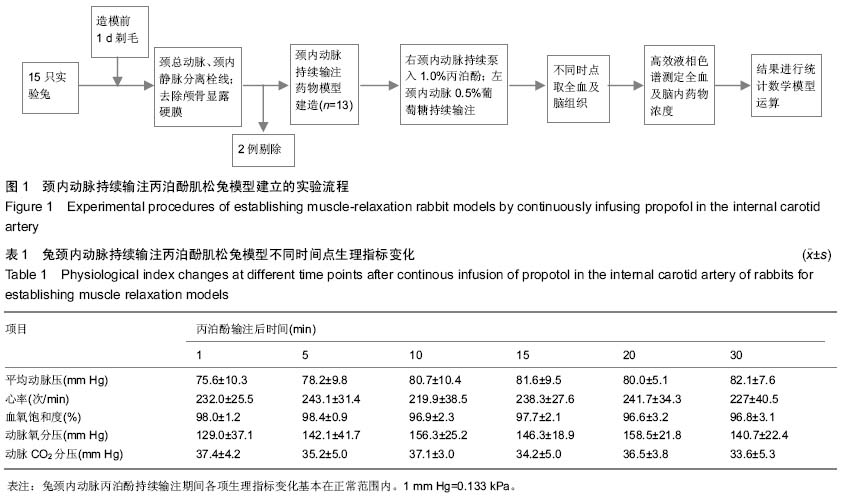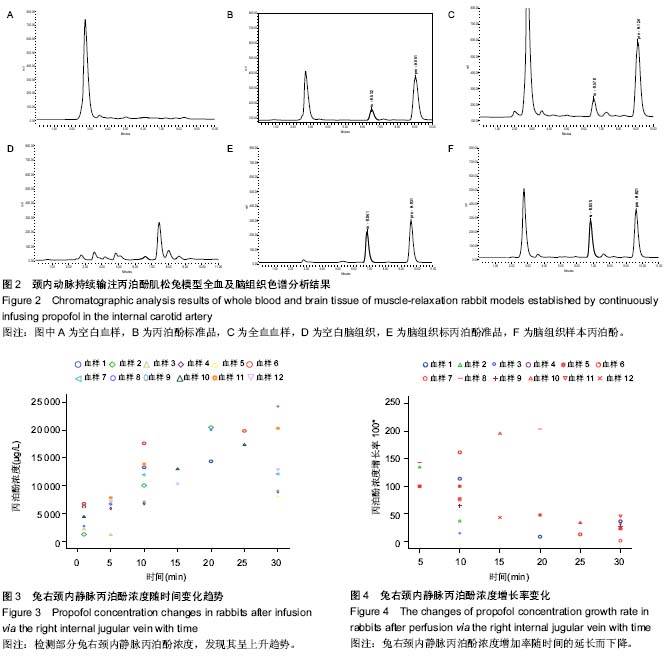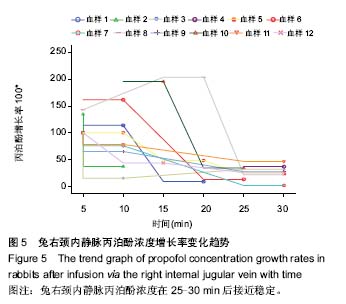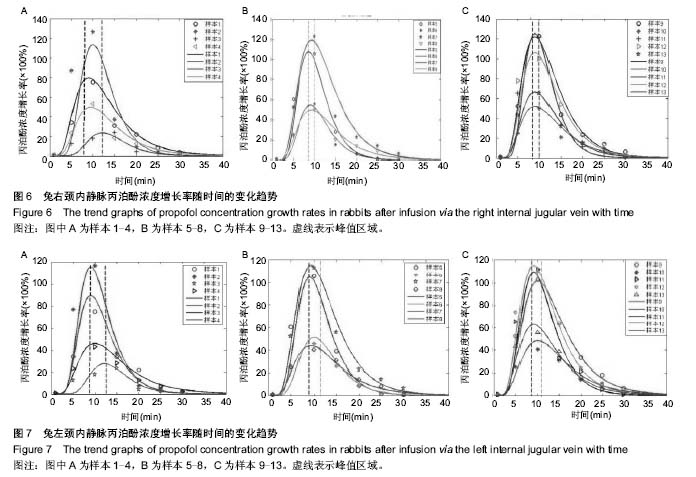中国组织工程研究 ›› 2015, Vol. 19 ›› Issue (27): 4394-4399.doi: 10.3969/j.issn.2095-4344.2015.27.024
• 骨髓干细胞 bone marrow stem cells • 上一篇 下一篇
颈内动脉持续输注丙泊酚构建肌松兔模型的药代动力学变化
尹 红1,谭 媛1,唐之音1,向荣武2,朱俊超1
- 1中国医科大学附属盛京医院麻醉二科,辽宁省沈阳市 110004;
2沈阳药科大学数学系,辽宁省沈阳市 110001
Constructing muscle-relaxation rabbit models by continuous infusion of propofolin in the internal carotid artery: pharmacokinetic variations
Yin Hong1, Tan Yuan1, Tang Zhi-yin1, Xiang Rong-wu2, Zhu Jun-chao1
- 1Second Department of Anesthesiology, Shengjing Hospital of China Medical University, Shenyang 110004, Liaoning Province, China;
2Department of Mathematics, Shenyang Pharmaceutical University, Shenyang 110001, Liaoning Province, China
摘要:
背景:经动脉选择性脑内给药方法是现阶段提高脑内药物浓度,降低药物对其他系统功能影响的有效方法之一。 目的:建立颈内动脉持续输注丙泊酚构建肌松兔模型,分析丙泊酚药物浓度变化规律。 方法:颈内动脉置管进行丙泊酚恒速持续输注建立兔颈内动脉持续输注丙泊酚肌松兔模型,在不同时点取得两侧颈内动静脉血及两侧脑组织样本,应用高效液相荧光法检测药物浓度,然后将所得数据进行数学转换,拟合处理,统计学回归分析药代动力学特点。 结果与结论:高效液相色谱荧光法测定丙泊酚浓度方法可行,系统稳定可靠。颈内动脉持续输注丙泊酚药物浓度增长率分析,数据分布呈对数正态分布图形,属于非指数动力学模型,即改良的对数正态分布模型, ,其中σ代表脑内药物浓度变化波动性的稳定性,与脑组织药物摄取和脑循环等多种因素有关的综合变量。说明颈内动脉持续输注丙泊酚药代动力学模型属于对数正态分布函数,属于非指数函数动力学模型。两侧脑内浓度随时间的变化规律遵循对数正态分布函数规律。 中国组织工程研究杂志出版内容重点:肾移植;肝移植;移植;心脏移植;组织移植;皮肤移植;皮瓣移植;血管移植;器官移植;组织工程
中图分类号:



